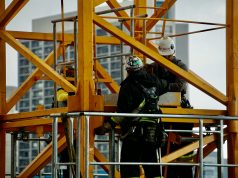In this article, we’ll be exploring how construction is utilising technology to help improve project outcomes…
In today’s fast-paced construction and engineering landscape, staying at the forefront of technological advancements is essential for improving efficiency, productivity, and project outcomes. From streamlining processes to enhancing collaboration with construction and engineering solicitors, technology has revolutionised the construction industry.
In this article, we will explore six key technological innovations that are reshaping the construction landscape and driving remarkable improvements in efficiency. By harnessing these advancements, construction professionals can optimise operations, reduce costs, and deliver projects with precision and effectiveness.
1. Building Information Modelling (BIM)
Building Information Modelling (BIM) has emerged as a game-changer in the construction industry. This innovative approach involves creating a comprehensive digital model that integrates architectural designs, engineering data, and construction information.
BIM enables seamless collaboration, precise planning, and efficient resource allocation throughout the project lifecycle. By leveraging BIM, construction professionals can visualise the entire project, identify potential clashes or errors early on, and make informed decisions that streamline construction processes.
When construction processes are streamlined, it can help to make savings. It enables teams to work more efficiently and that can help to improve project outcomes.
2. Virtual Reality and Augmented Reality
Virtual Reality (VR) and Augmented Reality (AR) technologies have paved the way for immersive and interactive experiences in construction. VR allows stakeholders to virtually explore construction designs, walk through virtual environments, and detect any design flaws or discrepancies. This brings designs to life in ways never seen before. Designers and construction companies can make informed decisions on features. This ensures that the final product meets the exact requirements of the client.
AR, on the other hand, overlays digital information onto the real-world construction site, providing real-time guidance and instructions to workers. By harnessing VR and AR, construction teams can enhance communication, minimise errors, and improve on-site efficiency.
1. Off-site Manufacturing
Off-site manufacturing, also known as prefabrication, involves assembling building components in a controlled factory environment before transporting them to the construction site. This approach minimises on-site labour and construction time while ensuring high-quality production.
With off-site manufacturing, construction projects benefit from increased precision, reduced material waste, and accelerated construction timelines. Additionally, off-site manufacturing enables enhanced safety measures and improved sustainability in the construction process. Furthermore, it allows projects to continue operating around the manufacturing of products and materials. This allows the processes to seamlessly fit together, all of which lends to the success of the project.
2. Modular Construction
Modular construction is revolutionising the way buildings are designed and constructed. This method involves constructing individual modules or units off-site, which are then transported to the construction site for assembly.
Modular construction offers numerous benefits, including reduced construction time, improved cost-effectiveness, and enhanced quality control. With the ability to simultaneously work on different modules, construction projects can be completed faster, providing increased efficiency and flexibility.
3. 3D Printing
3D printing has made significant strides in the construction industry, offering innovative solutions for complex designs and structures. This technology allows for the creation of intricate architectural elements, building components, and even entire structures through layer-by-layer printing. Elements can be intricately designed and amended before being used, giving the project manager the scope to get everything right on a wider scale.
3D printing in construction enables faster construction, reduced material waste, and increased design freedom. By harnessing this technology, construction professionals can push the boundaries of creativity, efficiency, and sustainability.
4. Robotics and Automation
The integration of robotics and automation is revolutionising the construction industry. Robots can now perform repetitive and labour-intensive tasks, such as bricklaying, concrete pouring, and even site inspection. Automation systems enable seamless coordination of construction processes, reducing errors and increasing efficiency. With the assistance of robotics and automation, construction projects can achieve higher productivity, improved safety, and reduced construction timelines.
Technology and Construction
As the construction industry continues to evolve, the integration of technology has become paramount for achieving optimal efficiency. From Building Information Modelling to Virtual Reality and Augmented Reality, off-site manufacturing to modular construction, and the groundbreaking potential of 3D printing, robotics, and automation, technology is reshaping construction practices.
By harnessing these transformative technologies, construction professionals can unlock new levels of efficiency, productivity, and project success. Embrace the future of construction by adopting these innovations and revolutionise the way we build.














